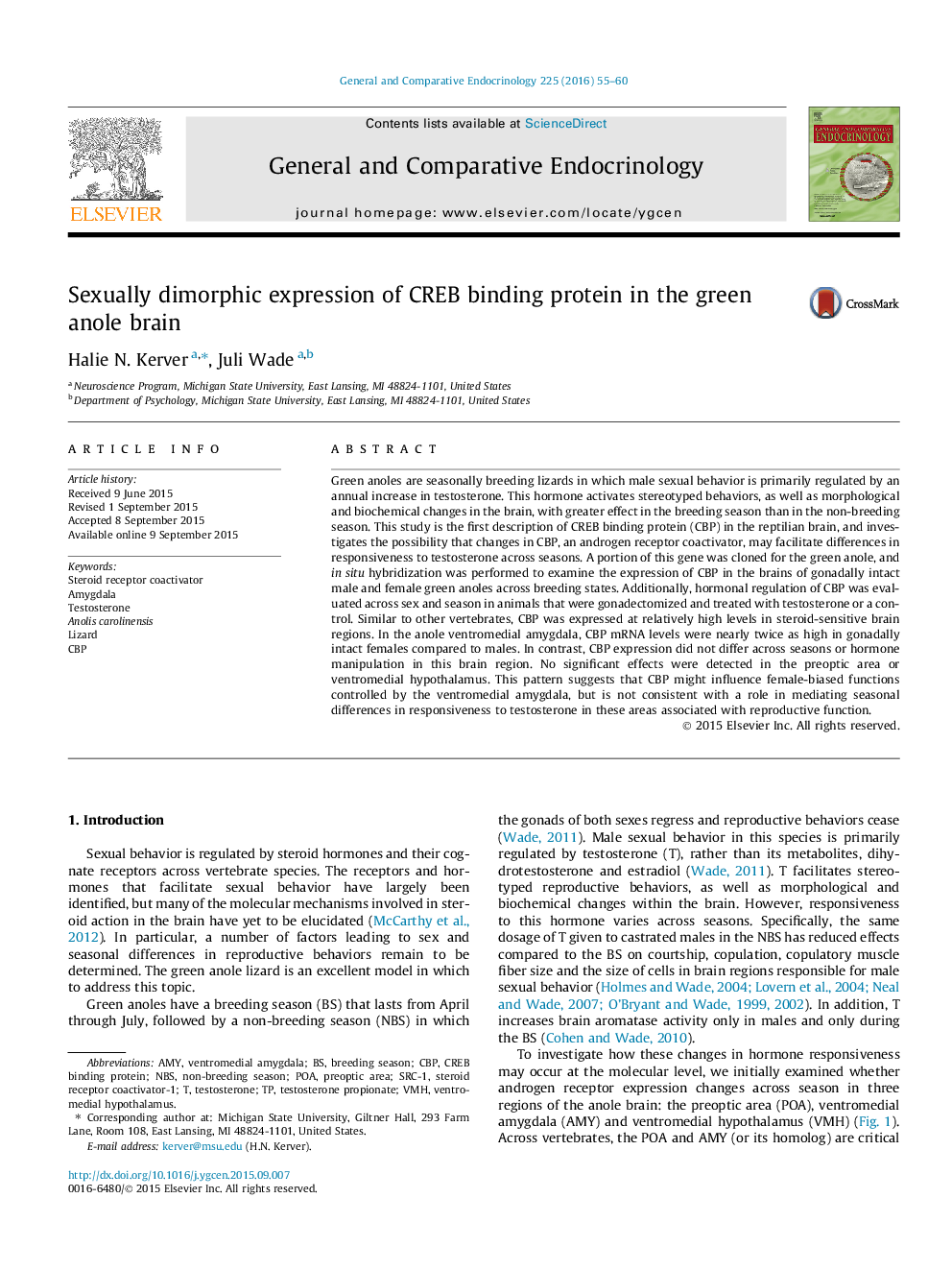| Article ID | Journal | Published Year | Pages | File Type |
|---|---|---|---|---|
| 2799877 | General and Comparative Endocrinology | 2016 | 6 Pages |
•CBP is expressed in relatively high levels in steroid sensitive brain regions.•CBP mRNA levels are nearly twice as high in the AMY of females compared to males.•This is the first report of sexually dimorphic CBP expression in the adult brain.•CBP does not appear to facilitate a seasonal responsiveness to T in the green anole.
Green anoles are seasonally breeding lizards in which male sexual behavior is primarily regulated by an annual increase in testosterone. This hormone activates stereotyped behaviors, as well as morphological and biochemical changes in the brain, with greater effect in the breeding season than in the non-breeding season. This study is the first description of CREB binding protein (CBP) in the reptilian brain, and investigates the possibility that changes in CBP, an androgen receptor coactivator, may facilitate differences in responsiveness to testosterone across seasons. A portion of this gene was cloned for the green anole, and in situ hybridization was performed to examine the expression of CBP in the brains of gonadally intact male and female green anoles across breeding states. Additionally, hormonal regulation of CBP was evaluated across sex and season in animals that were gonadectomized and treated with testosterone or a control. Similar to other vertebrates, CBP was expressed at relatively high levels in steroid-sensitive brain regions. In the anole ventromedial amygdala, CBP mRNA levels were nearly twice as high in gonadally intact females compared to males. In contrast, CBP expression did not differ across seasons or hormone manipulation in this brain region. No significant effects were detected in the preoptic area or ventromedial hypothalamus. This pattern suggests that CBP might influence female-biased functions controlled by the ventromedial amygdala, but is not consistent with a role in mediating seasonal differences in responsiveness to testosterone in these areas associated with reproductive function.
